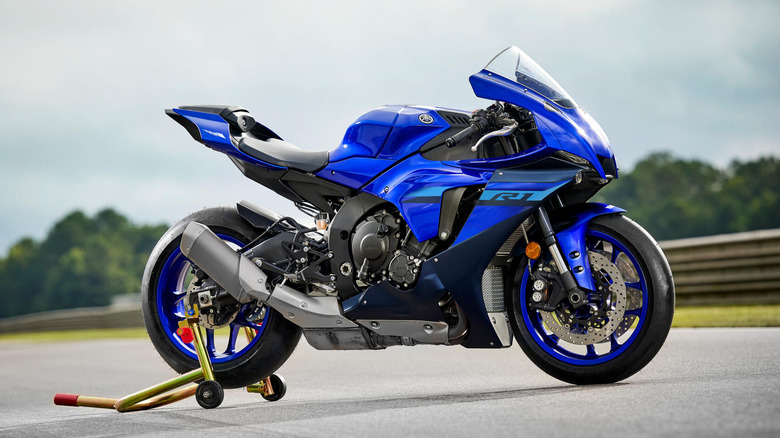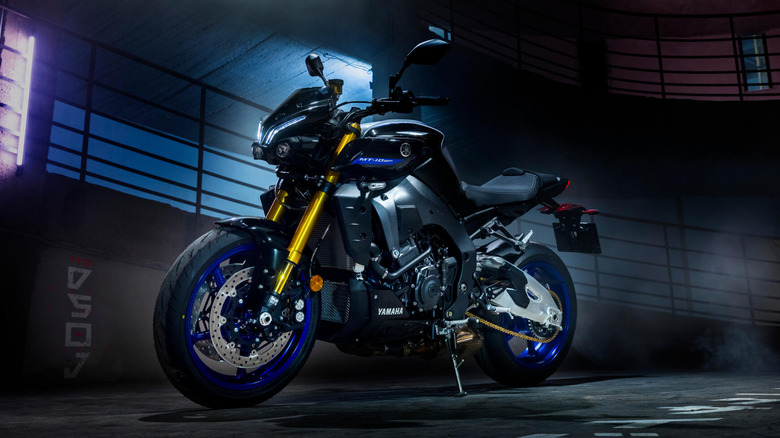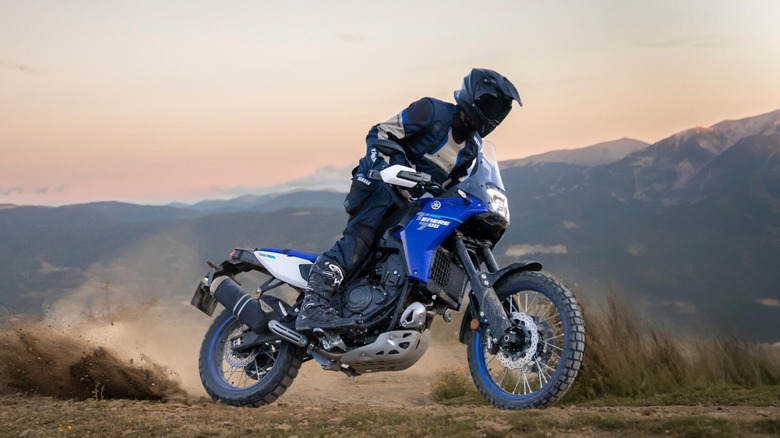Yes, Yamaha Uses Ride By Wire - Here's Which Motorcycles Have It
One of the most important factors in riding motorcycles is throttle control, which affects everything from a rider's acceleration speed to the smoothness of power delivery throughout a ride. Over the last 20 years, manufacturers have gradually switched from mechanical throttle cables to electronically controlled systems known as ride-by-wire. What was once a luxury feature only found on superbikes has now trickled down into almost every motorcycle market.
One of the manufacturers spearheading this movement is Yamaha, a company that has long combined performance and innovation and is also the creator of ride-by-wire technology. The company has added ride-by-wire technology to a wide range of bikes for 2025. So, what should you know before buying a Yamaha with this innovation? Which Yamaha models utilize this technology?
Yamaha's 2025 lineup consists of a diverse range of bikes as always, including sportbikes, retro-inspired cruisers, adventure tourers, and more, demonstrating the evolution of ride-by-wire and its range of applications.
What Yamaha riders should know about ride-by-wire
Yamaha's take on ride-by-wire technology, called YCC-T, or Yamaha Chip Controlled Throttle, substitutes an electronic system that uses sensors to interpret wrist input for the conventional throttle cable. The system makes use of throttle position sensors and the ECU to control power delivery after measuring the rider's throttle input. As a result, the bike is able to react more precisely as it is always receiving the right amount of fuel and air, and it works in unison with other onboard systems.
The primary advantage of the YCC-T system is its flexibility in various applications, having been used in some of the best Yamaha motorcycles ever made. Selectable ride modes, cruise control, and different traction and power delivery management systems are all possible thanks to it. It increases grip and sharpens response in performance bikes. It can smooth out power for comfort or challenging terrain in applications involving touring or adventure.
Some of the only downsides to using a ride-by-wire system are cost and complexity. The systems are more complex and expensive to manufacture than standard cables, resulting in repair and maintenance being more costly. For the majority of riders today, the benefits of ride-by-wire outweigh any potential disadvantages.
These 2025 Yamaha bikes come with ride-by-wire
At the pinnacle of Yamaha's range is the supersport class, where both the YZF-R1 and the new 2025 YZF-R9 have YCC-T. The system is integrated with a full range of electronic aids, such as launch control and IMU-assisted traction systems, in Yamaha's most expensive motorcycles, the R1 and R1M. The system is tweaked slightly in the R9 to provide a more accessible, midweight supersport experience.
Almost all of Yamaha's naked bike models use YCC-T, bar the MT-03. It allows for adjustable power delivery and multiple ride modes for the MT-10 and MT-09. The technology also appeared in the MT-07 for the first time in 2025, improving its throttle response and adaptability for a variety of rider styles.
The XSR900, one of Yamaha's retro-inspired cruiser models, utilizes YCC-T to provide modern responsiveness under its vintage facade. The YCC-T system is also what allows the Tracer touring bikes to have ride modes tailored for long-distance travel, like adaptive cruise control and adjustable traction. With the addition of YCC-T, even the off-road-capable Ténéré 700 now has adjustable throttle maps to fine-tune acceleration in all terrains.


